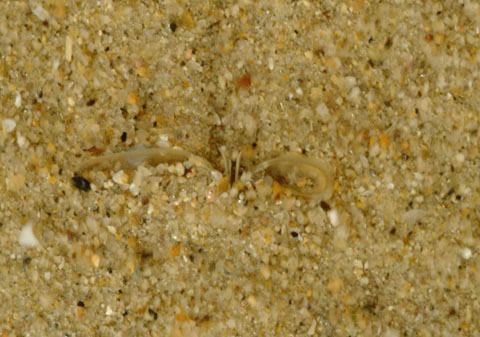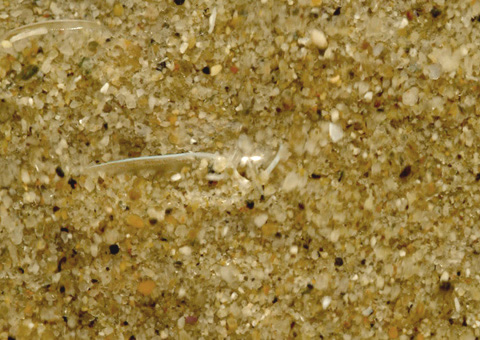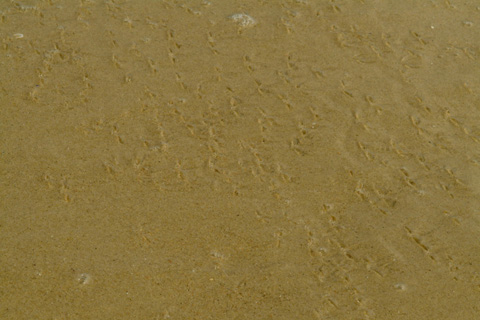 When burrowing, swimming, or crawling, it always moves backwards. |
Pacific Sand Crab (Mole Crab) Emerita analoga Decapoda: Hippidae Laguna Beach, Orange County, CA. 06/11/06. © Peter J. Bryant. |
 Its eyes are on long stalks and its antennules are long enough that it can keep them above the surface even after it has burrowed backwards into the sand. |
 The antennules form a tube though which water is directed downwards into the gill chambers. |
 Its legs and uropods have hairy margins for rapid digging in the sand, for filtering food and transferring it to the mouth. |
|
 When the crab is covered by a wave, the antennae are extended out over the sand to collect food. |
 The antennae are much bigger than the antennules, which are visible here in the center. |
 After the wave retreats, the antennae are quickly coiled and retracted into the body. Here only one is being retracted. |
 |
